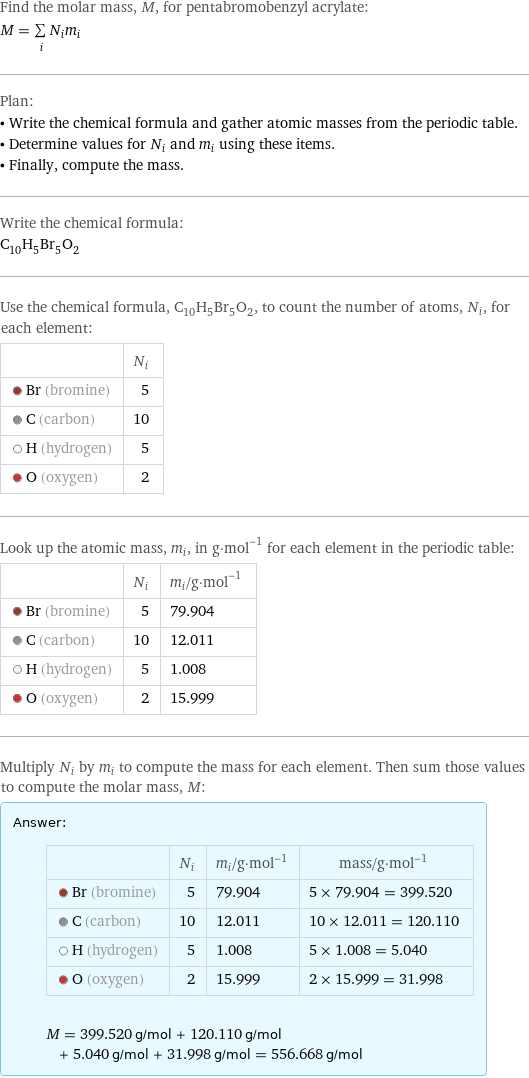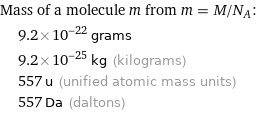Input interpretation

pentabromobenzyl acrylate | molar mass
Result

Find the molar mass, M, for pentabromobenzyl acrylate: M = sum _iN_im_i Plan: • Write the chemical formula and gather atomic masses from the periodic table. • Determine values for N_i and m_i using these items. • Finally, compute the mass. Write the chemical formula: C_10H_5Br_5O_2 Use the chemical formula, C_10H_5Br_5O_2, to count the number of atoms, N_i, for each element: | N_i Br (bromine) | 5 C (carbon) | 10 H (hydrogen) | 5 O (oxygen) | 2 Look up the atomic mass, m_i, in g·mol^(-1) for each element in the periodic table: | N_i | m_i/g·mol^(-1) Br (bromine) | 5 | 79.904 C (carbon) | 10 | 12.011 H (hydrogen) | 5 | 1.008 O (oxygen) | 2 | 15.999 Multiply N_i by m_i to compute the mass for each element. Then sum those values to compute the molar mass, M: Answer: | | | N_i | m_i/g·mol^(-1) | mass/g·mol^(-1) Br (bromine) | 5 | 79.904 | 5 × 79.904 = 399.520 C (carbon) | 10 | 12.011 | 10 × 12.011 = 120.110 H (hydrogen) | 5 | 1.008 | 5 × 1.008 = 5.040 O (oxygen) | 2 | 15.999 | 2 × 15.999 = 31.998 M = 399.520 g/mol + 120.110 g/mol + 5.040 g/mol + 31.998 g/mol = 556.668 g/mol
Unit conversion

0.55667 kg/mol (kilograms per mole)
Comparisons

≈ 0.77 × molar mass of fullerene ( ≈ 721 g/mol )

≈ 2.9 × molar mass of caffeine ( ≈ 194 g/mol )

≈ 9.5 × molar mass of sodium chloride ( ≈ 58 g/mol )
Corresponding quantities

Mass of a molecule m from m = M/N_A: | 9.2×10^-22 grams | 9.2×10^-25 kg (kilograms) | 557 u (unified atomic mass units) | 557 Da (daltons)

Relative molecular mass M_r from M_r = M_u/M: | 557